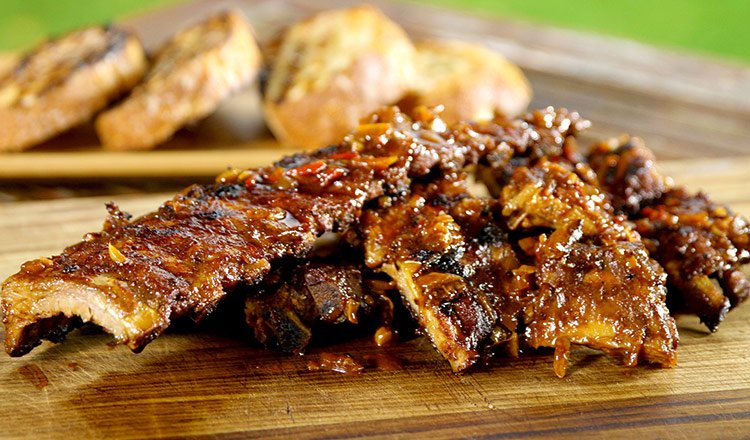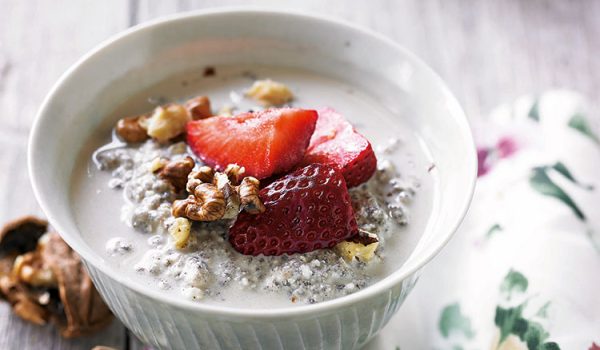Move over barbecue gurus! Bob Hart is here to share his Golden Rules of barbecuing…
1. When grilling, estimate how long you think you need to cook a piece of meat for, and then halve it!
The most common problem Australians have when it comes to barbecuing is their tendency to overcook everything. Remember, a barbecue is a grill and an oven, so the cooking time for protein on the grill is significantly shortened , provided you cook only with the hood down.
2. In fact, if you’re barbecuing with the hood up, you’re missing the point of a barbecue
Cooking with the hood up is like driving down the street with your car doors open, or cooking with the oven door open: you simply wouldn’t do it. Cooking with the hood up is an indication of a lack of basic barbecue understanding; it is vital to understand that a barbecue is essentially a grill inside an oven. Think about it…
3. When possible, cook over coals
This gives you the option of using wood chips to ensure that you will achieve flavour that is far superior to that you can achieve cooking over gas, as long as some basic rules are followed. I like Heat Beads® BBQ Briquettes as they are safe, reliable and predictable; I know exactly how long they will burn for, and know that they will provide a consistent cooking temperature which will cook my food evenly.
4. And the most golden of all golden rules? NEVER ever use a hotplate!
The whole idea of barbecuing is to ensure your meat remains close to the heat source, with nothing allowed to come between. A hotplate, in addition to being an inferior cooking device, will come between your meat and the heat, and will also interfere with the heat flow in your barbecue. Also, it will prevent you from achieving beautiful grill marks, the principle source of outdoor, barbecue flavours, on your food. Instead? Hotplates leave skidmarks!
Tools
- I prefer to cook on Weber kettles, Weber Smokey (correct) Mountain cookers or good kamados which hold heat brilliantly and use very little fuel once the outer case is hot. A good kamado will remain in the smoke zone for more than 24 hours on a single load of Heat Beads® BBQ Briquettes, for example, provided you remember to use a layer of unlit coals under the lit coals.
- But remember, the flavour of smoked food is imparted not by the fuel but by the wood chips or chunks added to the fire. I usually opt for hickory chips but some other woods – notably fruit woods – are also good. Soak chips or chunks for an hour beforehand to prevent them from bursting into flames, and sprinkle on top of your burning BBQ Briquettes. Chips deliver smoky flavour quickly but chunks last longer, so choose based on your required cooking time, and try a mix of the two for an early intensity and a long smoke effect.
Preparation
- Always remove meat from the fridge for an hour or two before cooking to allow the meat to return to room temperature. By cooking meat at room temperature you prevent it from staying raw in the middle after cooking – particularly for thick pieces of meat such as large (600-700g)
rib-eyes. - If you’re unsure how to prepare your meat – butterflying a chicken or boning a leg of lamb, for example – ask your butcher to do this for you on purchase. If he is unable or unwilling to oblige, find a new butcher!
- I never use liquid marinades: I believe they conceal or distort the flavour of the meat and draw out the juices. Additionally, most marinades contain sugar which should never be applied to your grill. I always use a dry rub because dry rubs and cast iron grills are friends, while marinades and grills are not!
What to cook
- If you’re looking for something quick and delicious to grill, I recommend a large rib-eye steak on the bone; there’s nothing better, and it’s not difficult to cook provided you time the process precisely. For example, for a 650-700g steak, you don’t need to cook it for any longer than 12 minutes in total on a very hot grill. Divide the total cooking time into four sections, in this instance it would be four sections of 3 minutes. Place the steak on the grill bars at a 45 degree angle, and flip over after three minutes. After another three minutes flip again and turn through 90 degrees, and for the final three minutes flip over from that second position. Always remembering, of course, to drop the hood between turns!
Temperature
- When a recipe tells you to cook at a high heat it generally means between 220-250 degrees. The dial on a barbecue will generally indicate the ambient temperature but not necessarily the grill temperature which could be anything up to 350 degrees! This need not be an issue, however, as the reason so many people overbook steak is that they are careless with the timing and misunderstand the “oven” effect.
Cooking Method
- There are at least three methods of roasting on a barbecue: direct, indirect, or slow-roasting over smoke. Direct cooking is a similar to cooking in a hot oven. Indirect is a gentler way of roasting, and slow roasting over smoke is cooking at a gentle heat with lots of smoke involved.
Too many flames
- If your barbecue flames up, something’s not right. Generally it’s because the hood is up or excess fat is dripping directly on to a flame. Don’t panic, just be prepared to move the meat to a cooler part of the grill. But also remember that some caramelising of, say, a large steak, is highly desirable.
After cooking
- Resting meat is a key part of the cooking process. Time spent on the grill isn’t where the cooking ends – you need to rest grilled meat, lightly tented in foil, for at least half the cooking time. Rest it in a warm (never hot!) place with reasonable air circulation. Place the meat, for example, on a warm cake rack over a baking dish. This will allow the juices to redistribute themselves through the meat. While the meat collects its thoughts…
Cleaning
- I do very little in terms of cleaning my barbecues. Before and after cooking I always give the grill bars a brisk rub with a wire brush. Following that I smear grill bars with any kind of vegetable oil – canola or olive are ideal – and I do this by applying the oil with a paper kitchen towel folded four times and locked in a pair of tongs. Never use a brush which is likely to shed bristles. The more often you do this, the better the surface of your grill – and the quality of your grilling – will become.
Try some of these delicious BBQ recipes…
Grilled Tuna With Tapenade
Asado Style BBQ Beef Ribs
 Adrian Richardson’s Big Aussie Burger
Adrian Richardson’s Big Aussie Burger
Recipes and tips thanks to Heat Beads® who is celebrating the launch of their latest product, the Heat Beads® Chimney Booster which ensures you are ready to cook over coals in just 12 minutes.
What are some of your great BBQ tips? Tell us in the comments below!…









